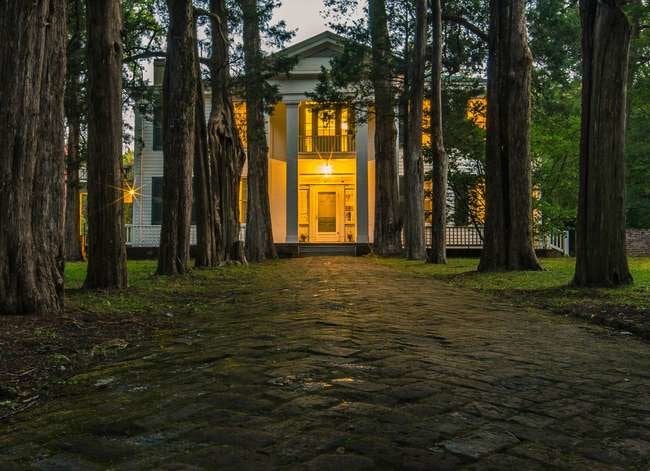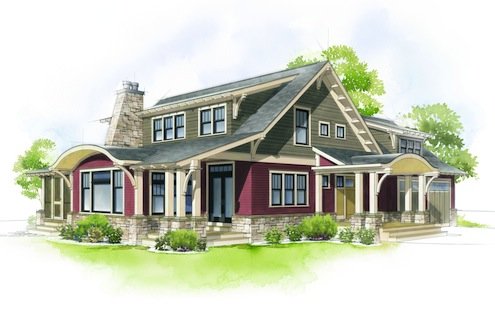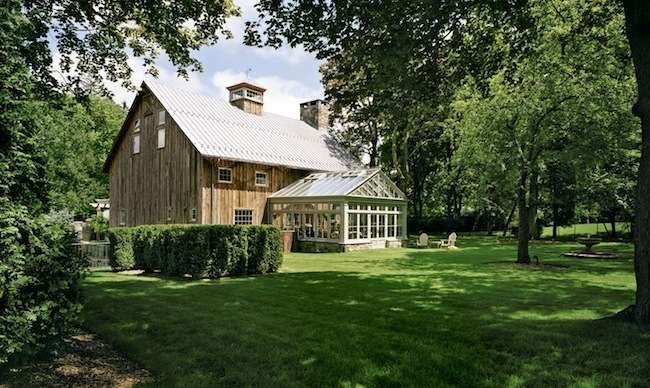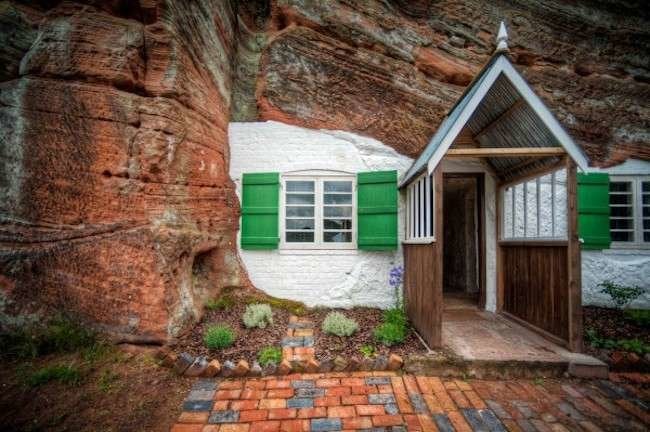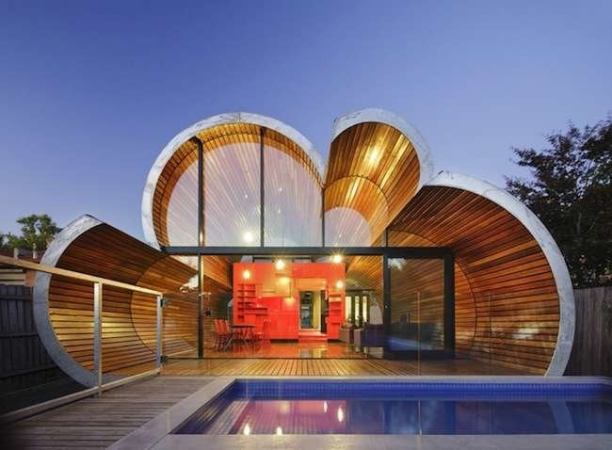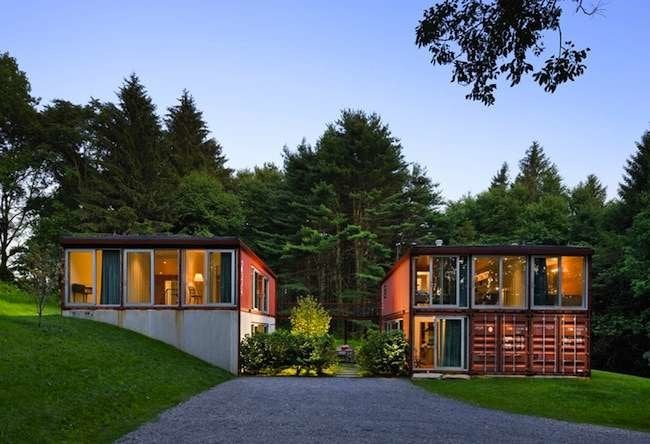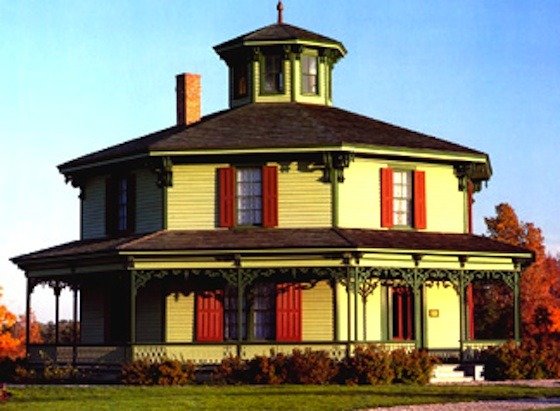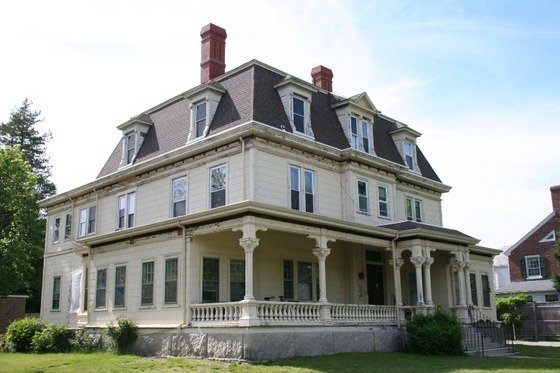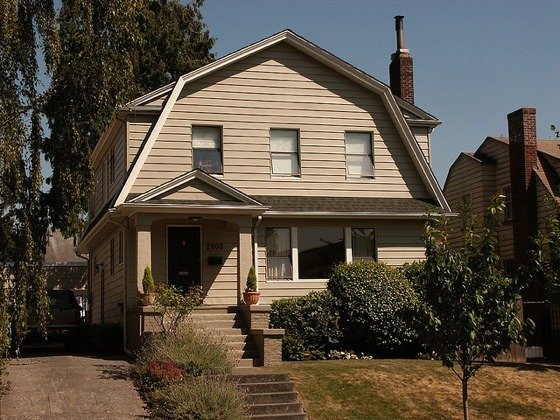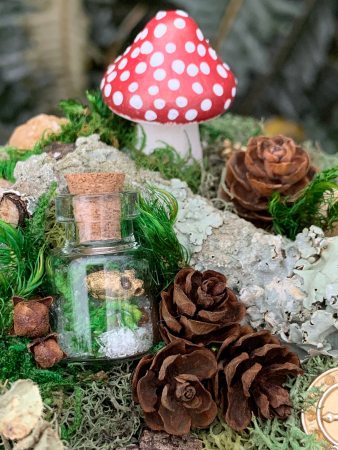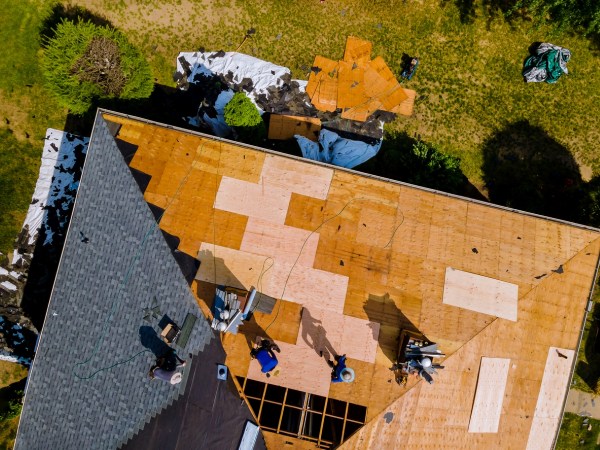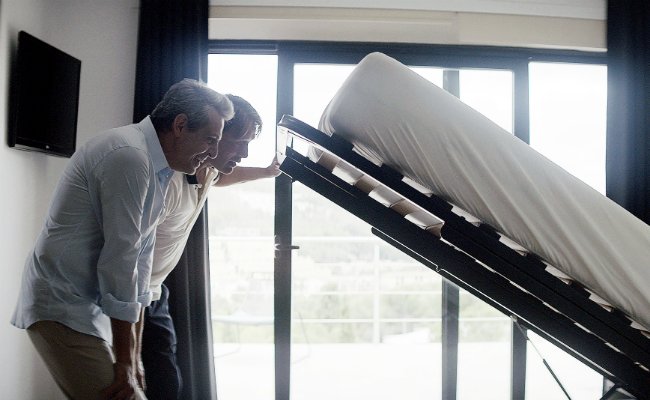We may earn revenue from the products available on this page and participate in affiliate programs. Learn More ›
William Faulkner's Rowan Oak
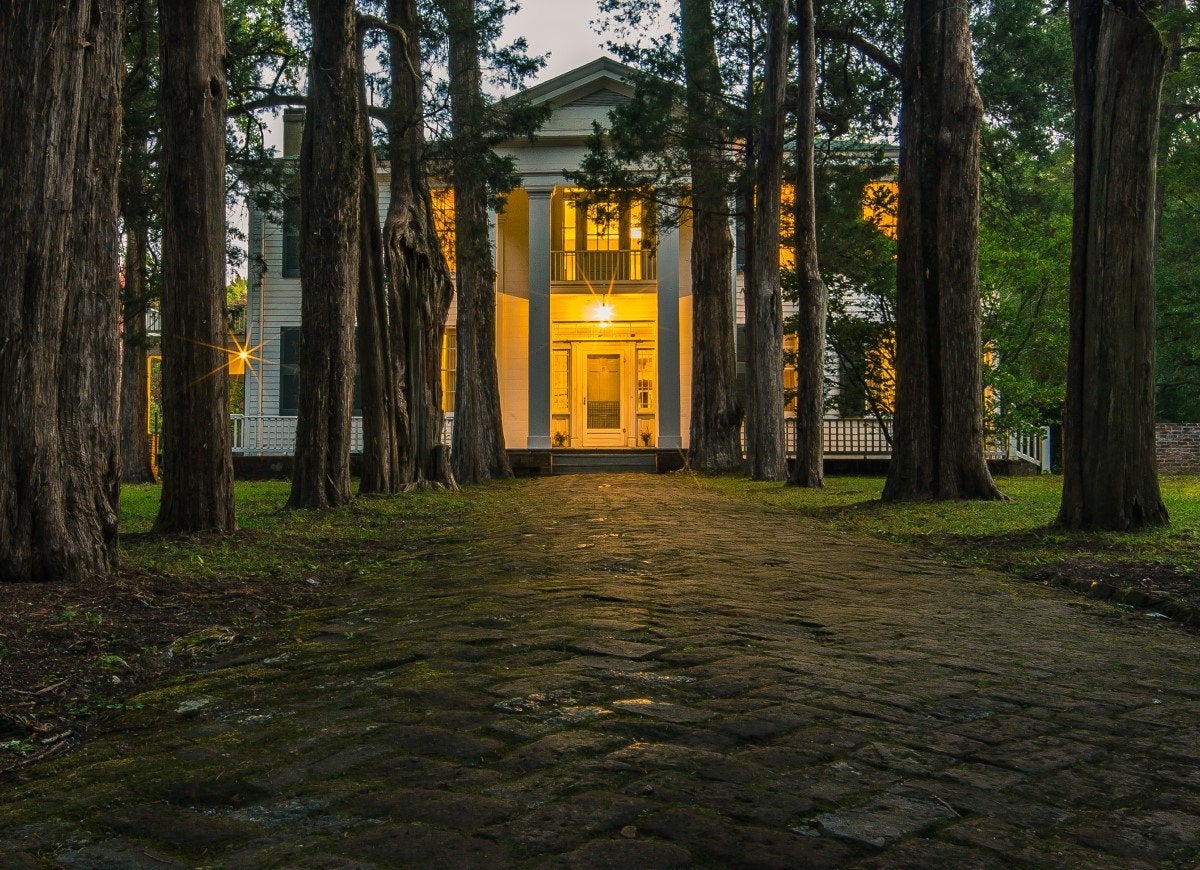
If it’s Southern Gothic you want, look no further than William Faulkner’s home of more than 40 years, Rowan Oak. This Greek Revival-style house, built in 1844 and located in Oxford, Mississippi, features everything you’d expect of a classic Southern home, including a cedar-lined driveway and imposing portico. Faulkner took on much of the home’s renovation himself, including the DIY bookshelves you’ll find in the library where he did most of his writing. Visit the website for hours and admission cost.
Emily Dickinson's Homestead
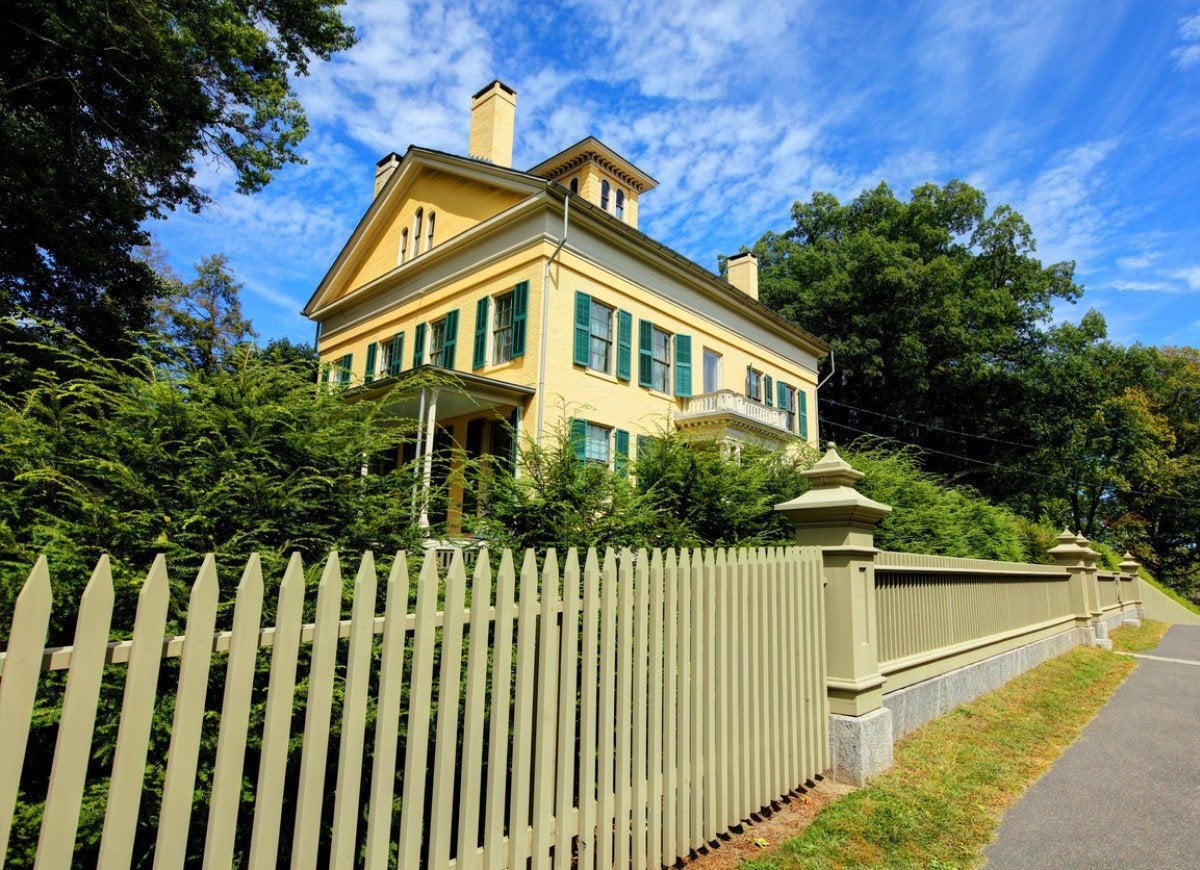
Where better to be America’s most-famous recluse than the beautiful town of Amherst, Massachusetts? Tour the pristine 19th century home where Emily Dickinson was born and lived out her literary life. The tour holds a few surprises, including the miniscule bedside stand where Dickinson penned most of her groundbreaking poems.
Insider’s tip: For a trip back in time, be sure to visit her brother and sister-in-law’s estate, The Evergreens, located nextdoor. Nearly untouched, its dilapidated interior offers a rare glimpse into home design and decor from the turn of the last century. Plan a guided tour of both at the Homestead’s website.
Herman Melville's Arrowhead
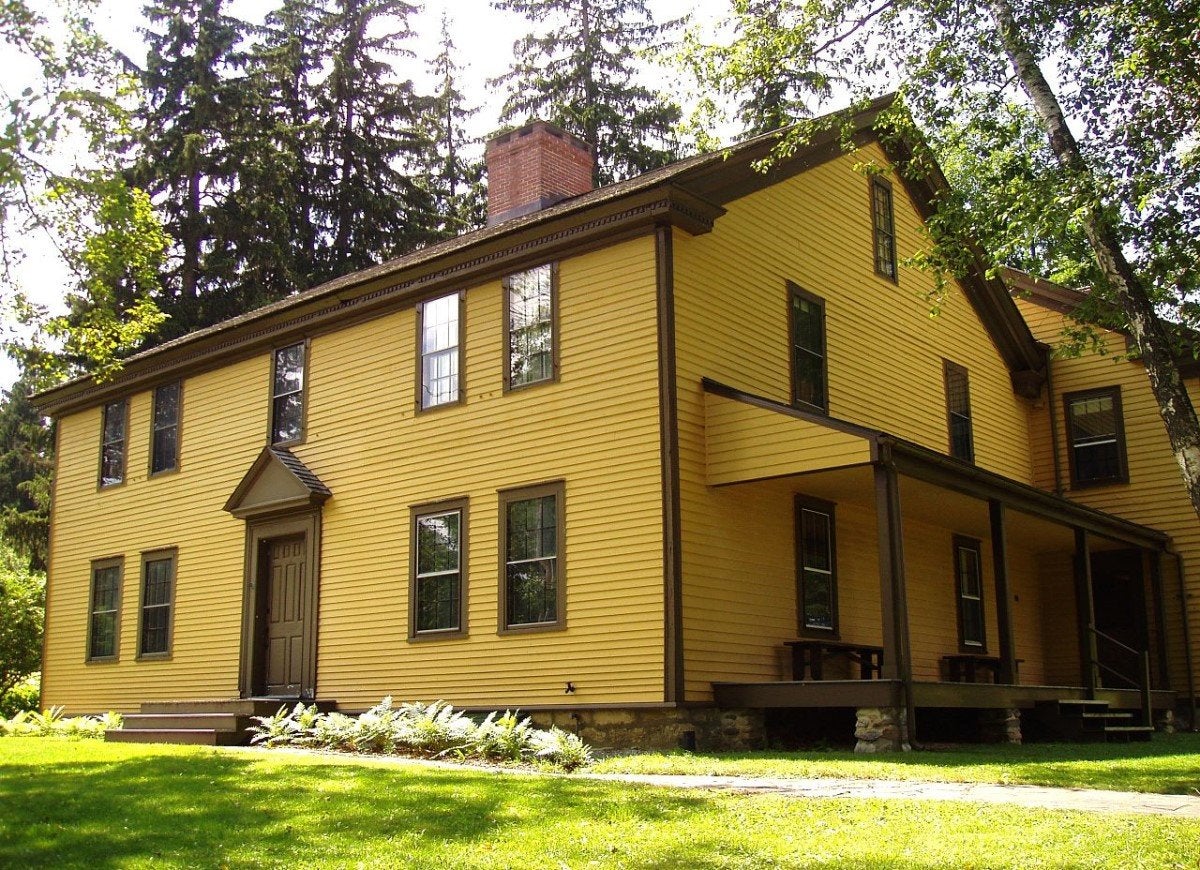
commons.wikimedia.org via Daderot
Moby Dick stands as its own “great white whale” in the American canon. Step into the room where Herman Melville wrote his masterpiece—and see his daily view of Mt. Greylock, the whale-shaped mountain that inspired the maritime novel. The dark interior of the Melville homestead, located in Pittsfield, Massachusetts, holds much of the family’s original furniture and is a well-preserved 1790s New England farmhouse, including a historic barn. The guided tour also answers the question, ‘How many people can sleep in a Federal-period bedroom?’ (Short answer: too many.) Learn more about this literary landmark at the Arrowhead website.
RELATED: America’s 50 Most Famous Houses
Frederick Douglass's Cedar Hill
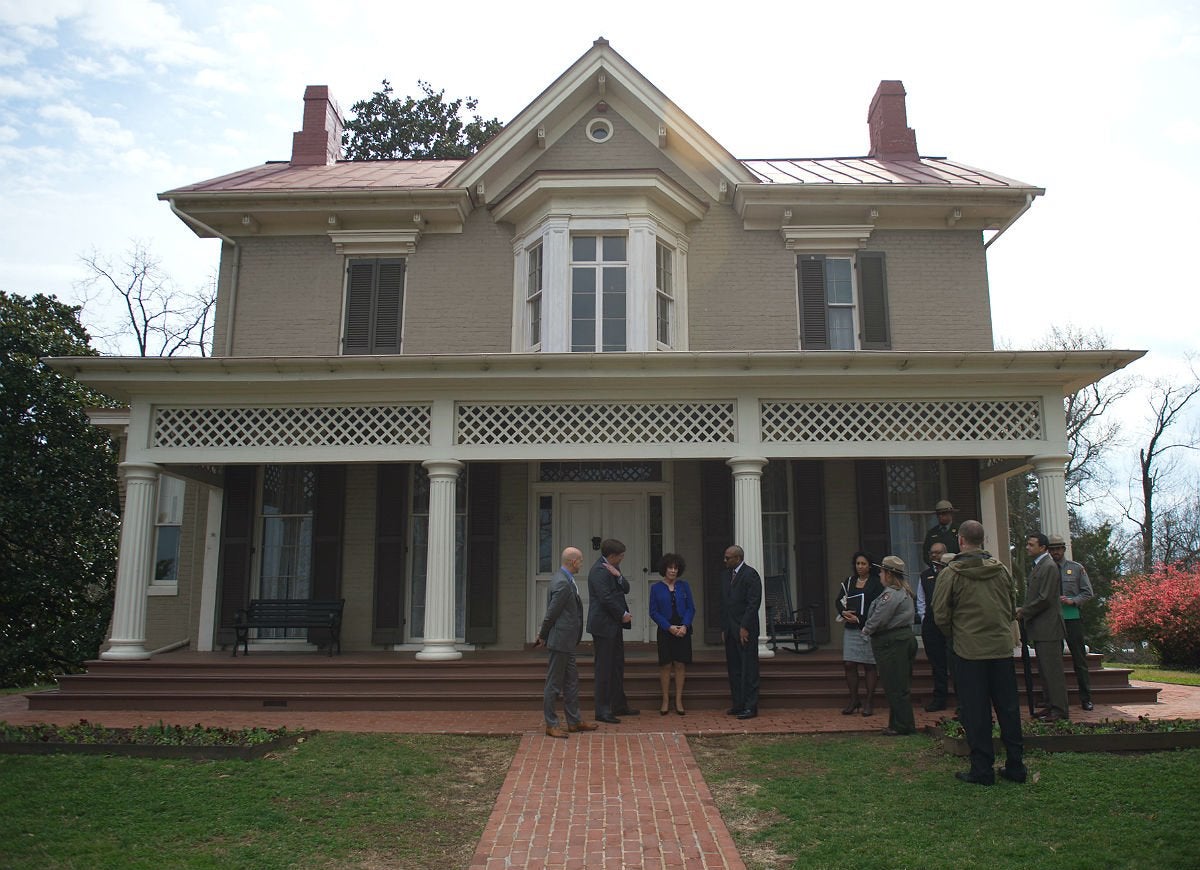
flickr.com via Shane T. McCoy / US Marshals
The abolitionist Frederick Douglass penned one of America’s most influential works of nonfiction, Narrative in the Life of Frederick Douglass, an American Slave. Visit the 20-room Victorian home he purchased as a freeman in 1877 for $6,700. Included in the tour of this Washington D.C. house is Douglass’ study, where he wrote his autobiography at a roll-top desk now on display. Be sure to ask your guide about “The Growlery,” a stone cabin located on the premises. Visit the website to plan a guided tour.
The Edward Gorey House
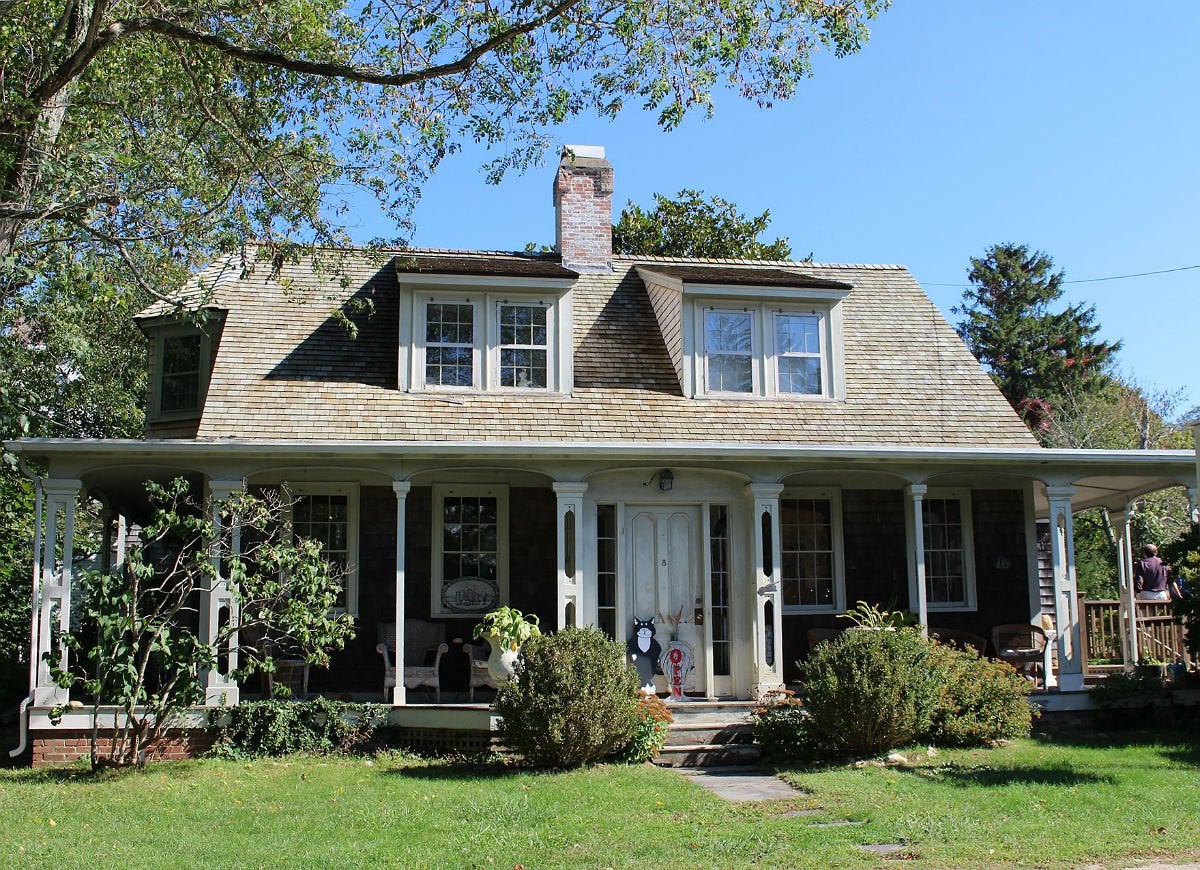
flickr.com via Amy Meredith
Edward Gorey might be best known for his deliciously macabre prose and twisted illustrations, but don’t expect to find anything morose at his 200-year-old sea captain’s home in South Yarmouth, Massachusetts. This Cape Cod house turns its back on all things gothic in favor of traditional wood-shingle siding and historic fireplaces. The house also features a large collection of Gorey’s work on display, much of it unreleased. Check the website to plan your visit.
The Mark Twain House and Museum
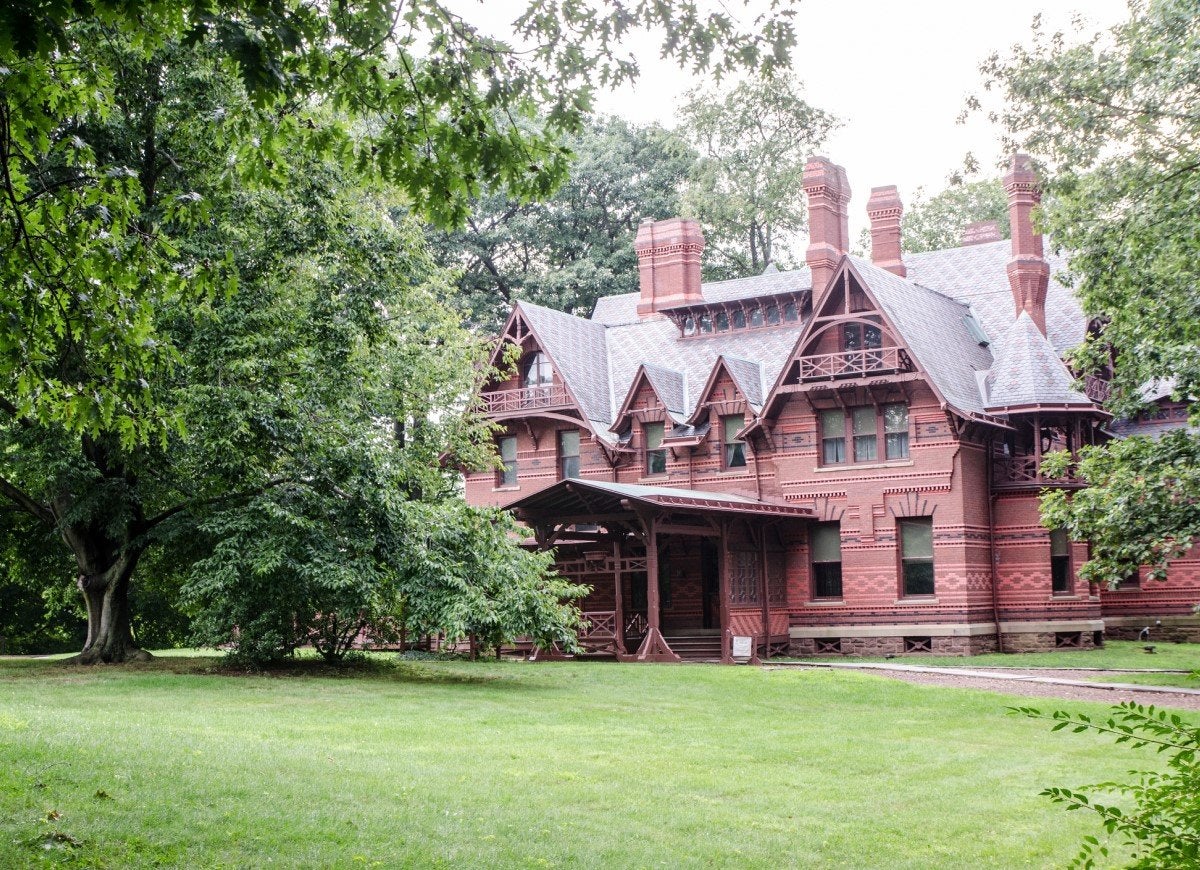
Construction began on Mark Twain’s Hartford, Connecticut, home in 1873, and few expenses were spared. This 11,500 sq. ft. home features three floors and 25 rooms, including Twain’s combo billiards room and writing studio. Breathtakingly ornate woodwork and hand-stenciled wall coverings make this one of the most opulent literary homes on our list. Tickets are available in advance on the website.
RELATED: 8 Historic Homes That Were Light Years Ahead of Their Time
Laura Ingalls Wilder's Rocky Ridge Farm
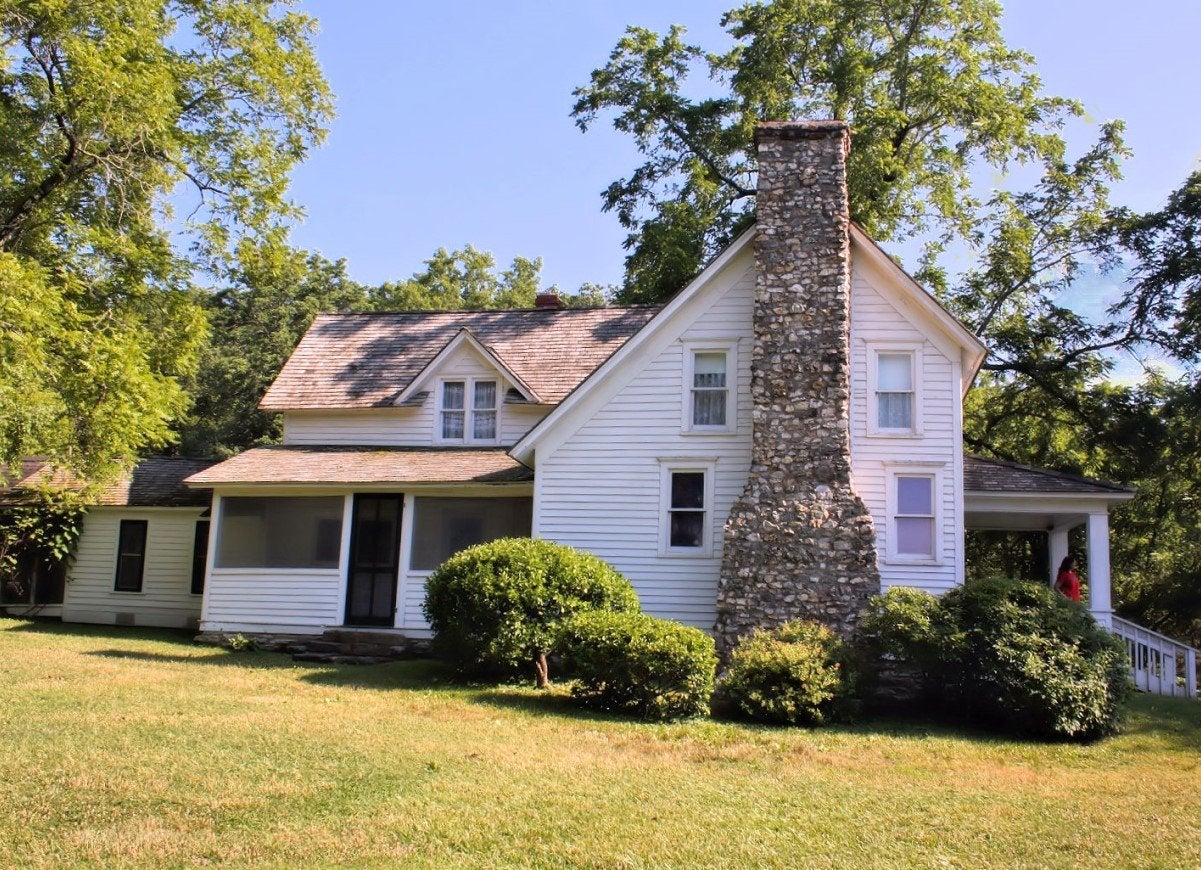
commons.wikimedia.org via TimothyMN
Laura Ingalls Wilder captured pioneer life within the pages of her novels—a life well preserved at her Rocky Ridge Farm in Mansfield, Missouri. See the 1913 farmhouse where she wrote many of her well-known works, including Little House on the Prairie. The tour includes several details readers will cherish, including Wilder’s writing desk and “Pa’s” fiddle. Find hours and ticket prices at the website.
The Ernest Hemingway Home and Museum
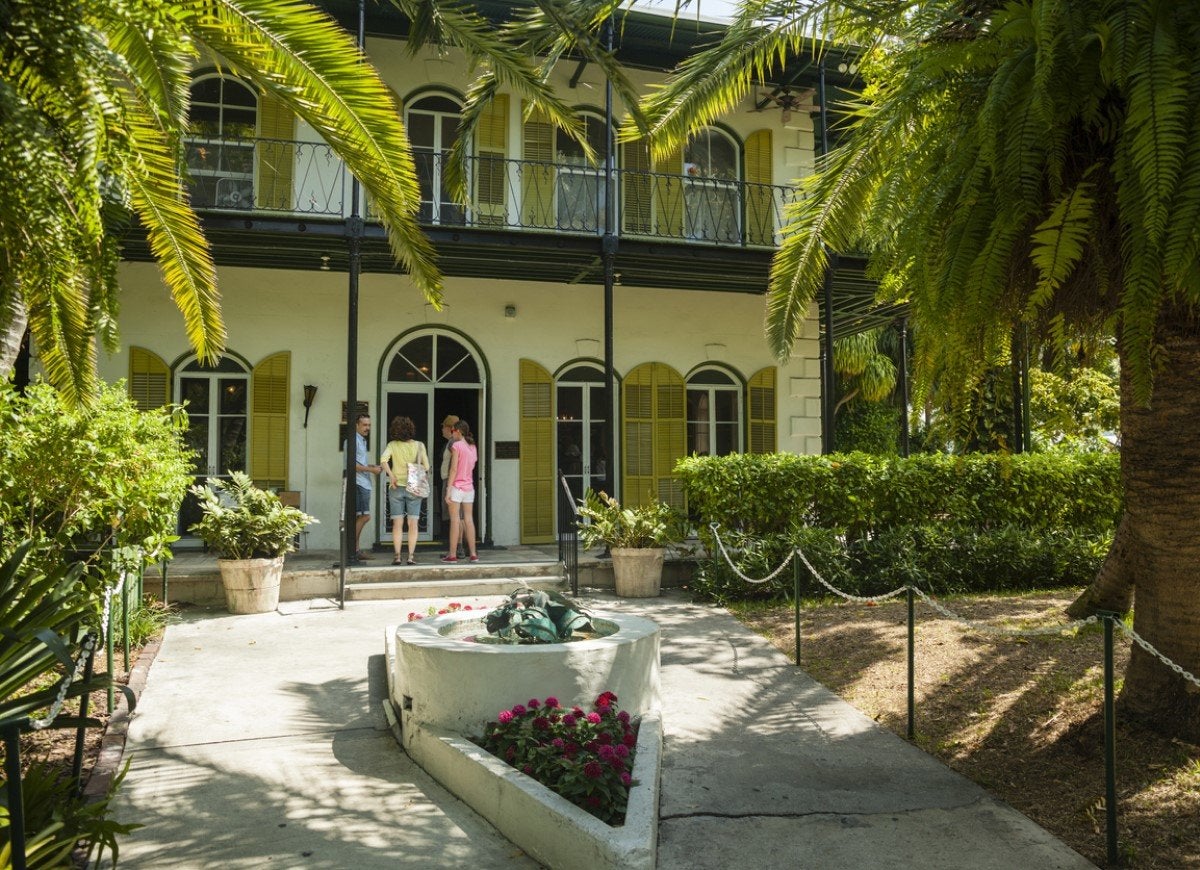
Cat lovers, unite! A visit to Ernest Hemingway’s Key West estate wouldn’t be complete without a sighting of one of the property’s 50 or more six-toed felines—reportedly descended from a cat Hemingway received as a gift in the 1930s. The limestone home contains well-preserved details, including faucet fixtures, majestic chandeliers, and the first swimming pool in Key West. Hemingway’s round writing desk is also on display in the library. Consult the website to plan your visit.
RELATED: How the Historic Hemingway Home Beats the Florida Heat and Humidity
Edith Wharton's the Mount
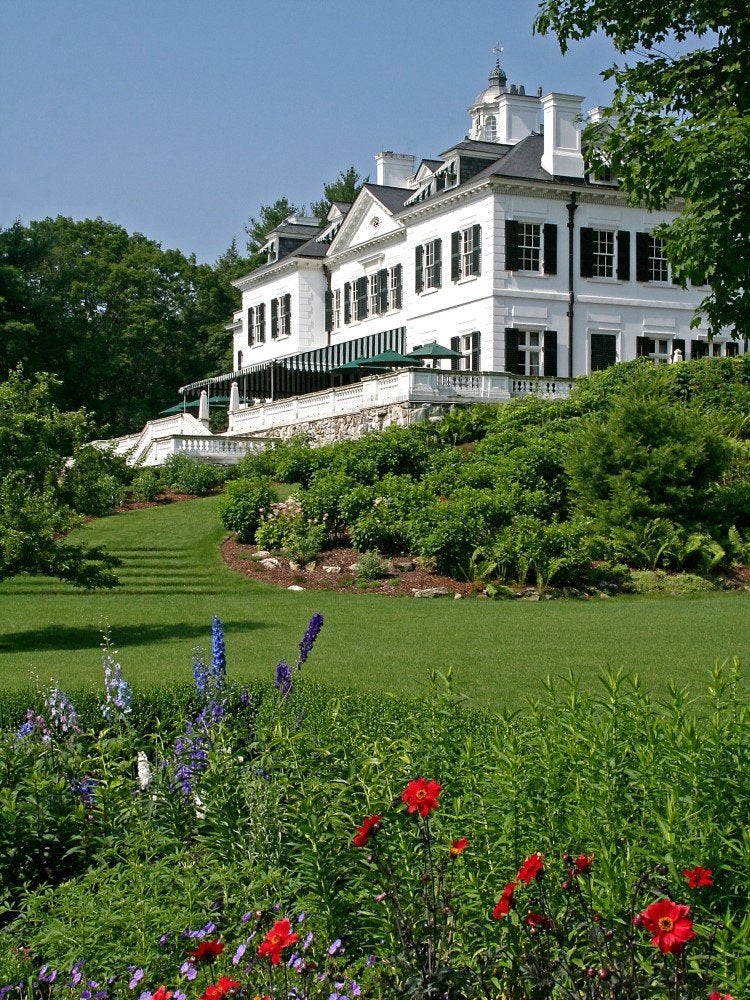
flickr.com via David Dashiell
The American novel Ethan Frome may feature New England austerity, but writer Edith Wharton’s estate is anything but. The Mount is a breathtaking English-style mansion, complete with ornate trimwork, an expansive terrace, and perfectly preserved servant’s quarters. Located in Lenox, Massachusetts, this 50-acre estate also features an Italian garden and contemporary sculpture walk. Reservations are not necessary, but check the website for details.
RELATED: The Secret Histories of 15 Grand Old American Mansions
The Steinbeck House
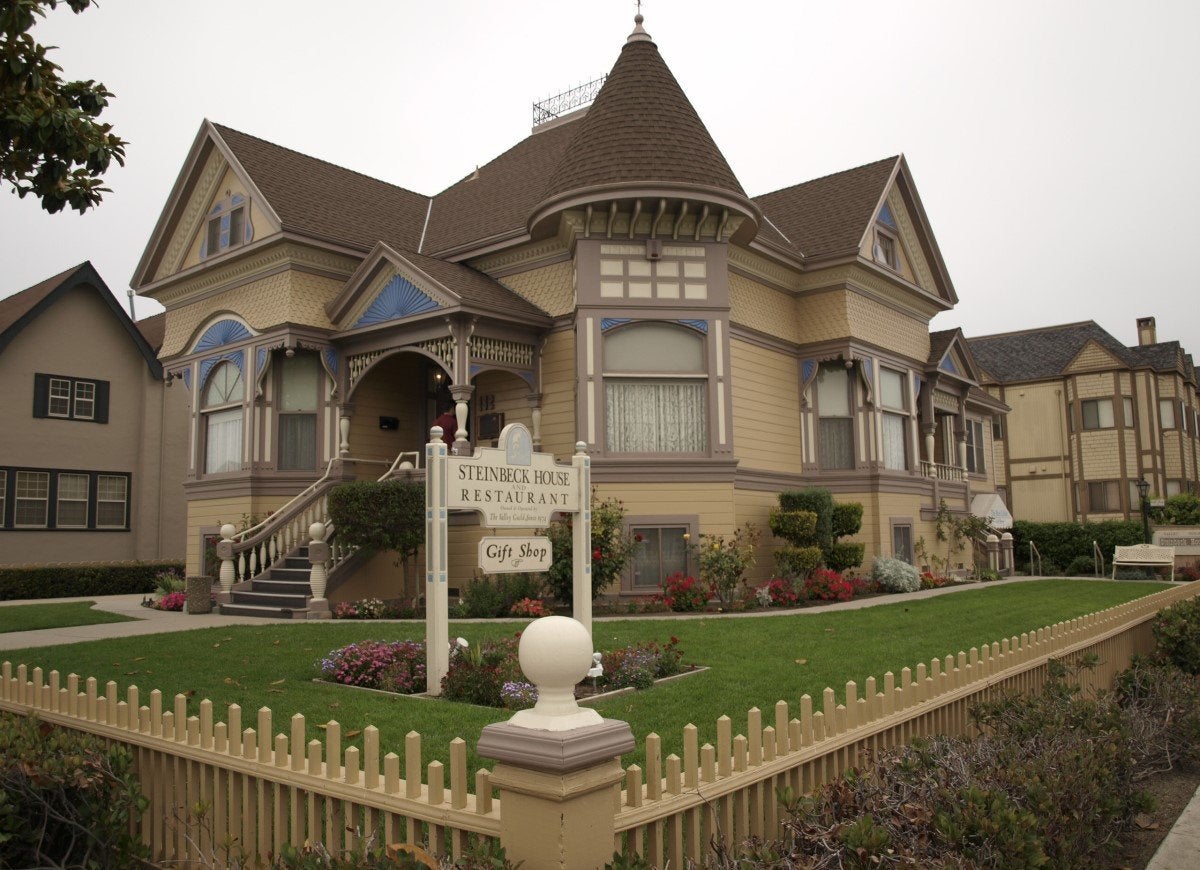
flickr.com via Techie Diva
Thankfully, the Steinbeck House holds more men than mice. The birthplace and boyhood home of the author of The Grapes of Wrath is open to the public in Salinas, California. Peek into the bedroom the future novelist is said to have locked himself in as a child, determined to fulfill his writerly ambitions. This Queen Anne-style Victorian is open for tours and includes a restaurant, which serves lunch daily. Get more info to plan a visit and meal.
Tennessee Williams Home and Welcome Center
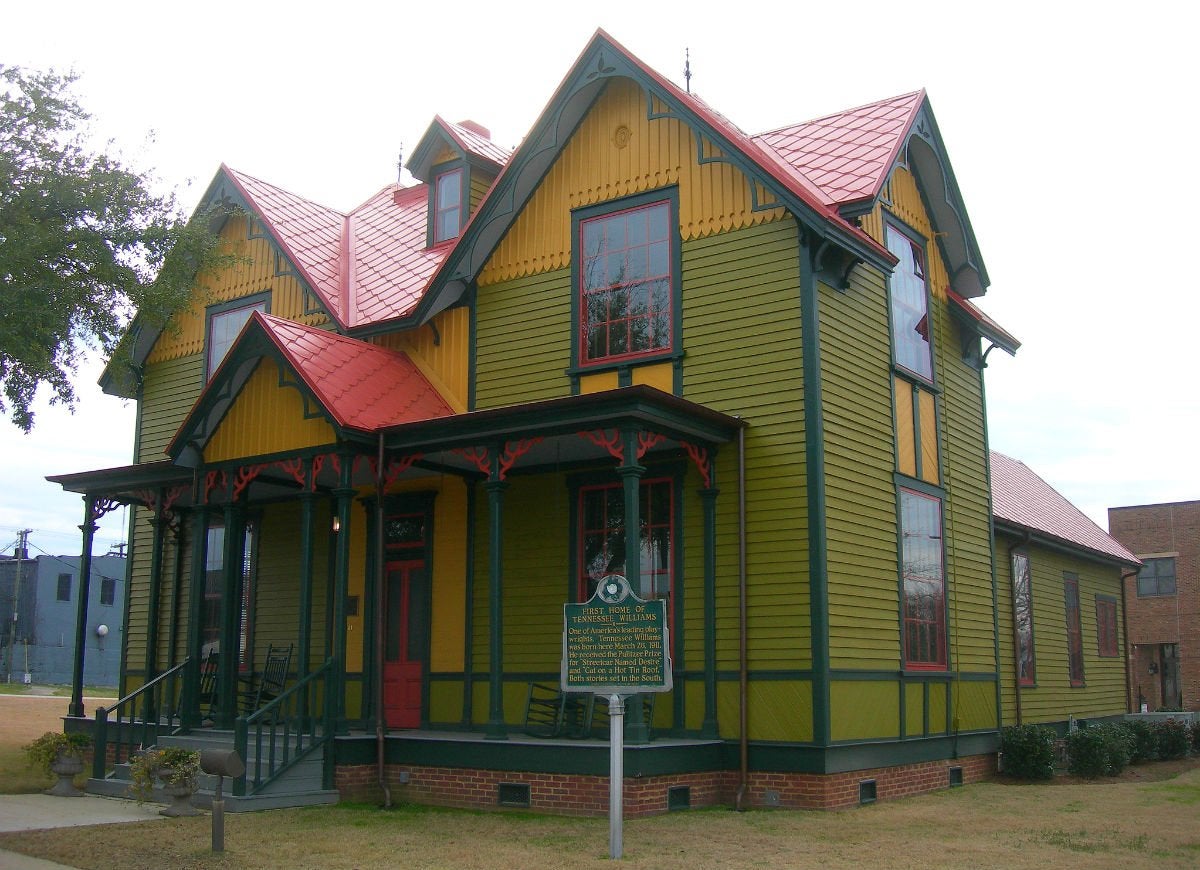
flickr.com via Jimmy Emerson, DVM
This first home of the author of Cat on a Hot Tin Roof and The Glass Menagerie is rich in Victorian-era glory. Located in the heart of Columbus, Mississippi, the Williams home gives visitors an opportunity to see where America’s preeminent playwright spent his earliest years—and tours are free of charge. Learn more at the website.
RELATED: America’s Most Colorful Small Towns
The London's Cottage
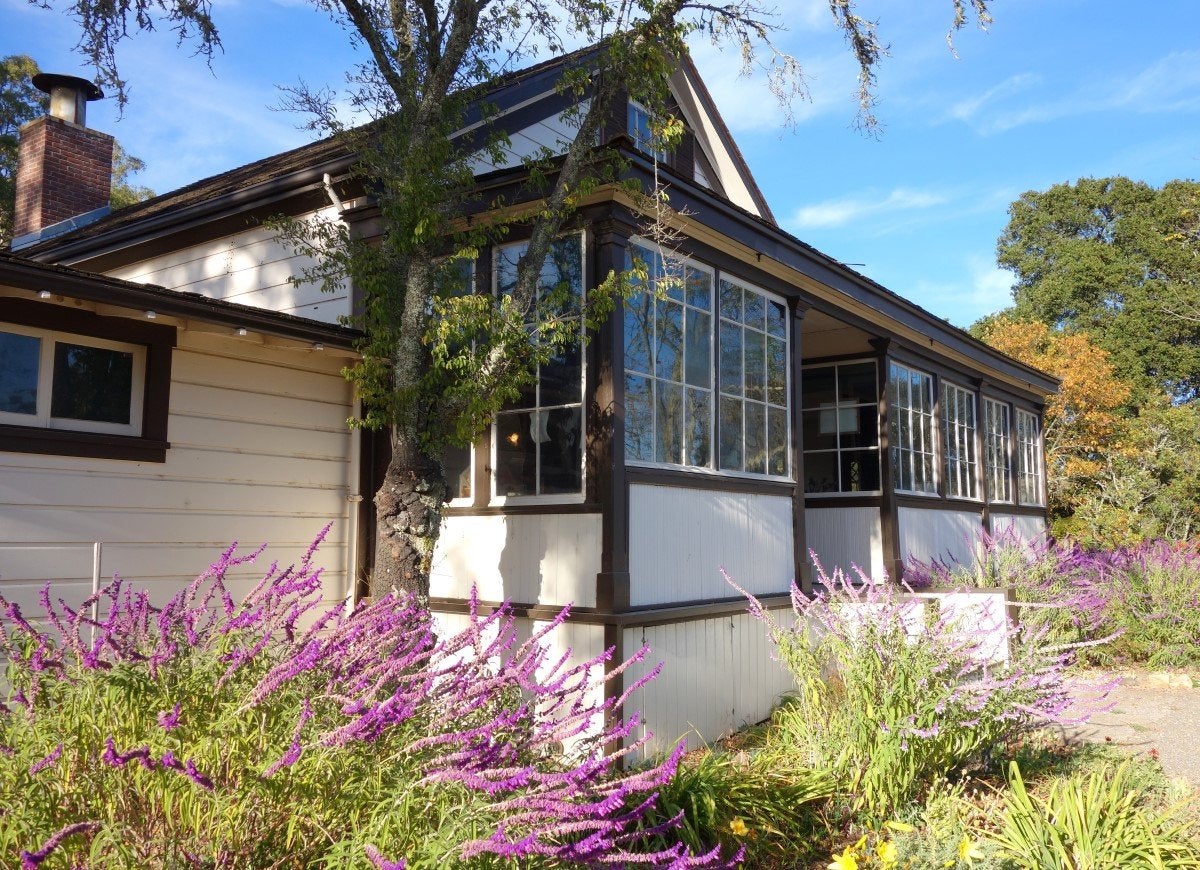
commons.wikimedia.org via Daderot
Ironically, the author of snowy classics like Call of the Wild and White Fang called sunny California home. Visit the Sonoma Valley cottage where Jack London and his wife Charmian lived, as well as a stone addition where the Yukon-inspired novelist cranked out 1,000 words a day. The sprawling London Ranch also features the ruins of Wolf House, a stone mansion lost to fire before construction was completed. Check the website for hours and admission.
Flannery O'Connor's Andalusia Farm
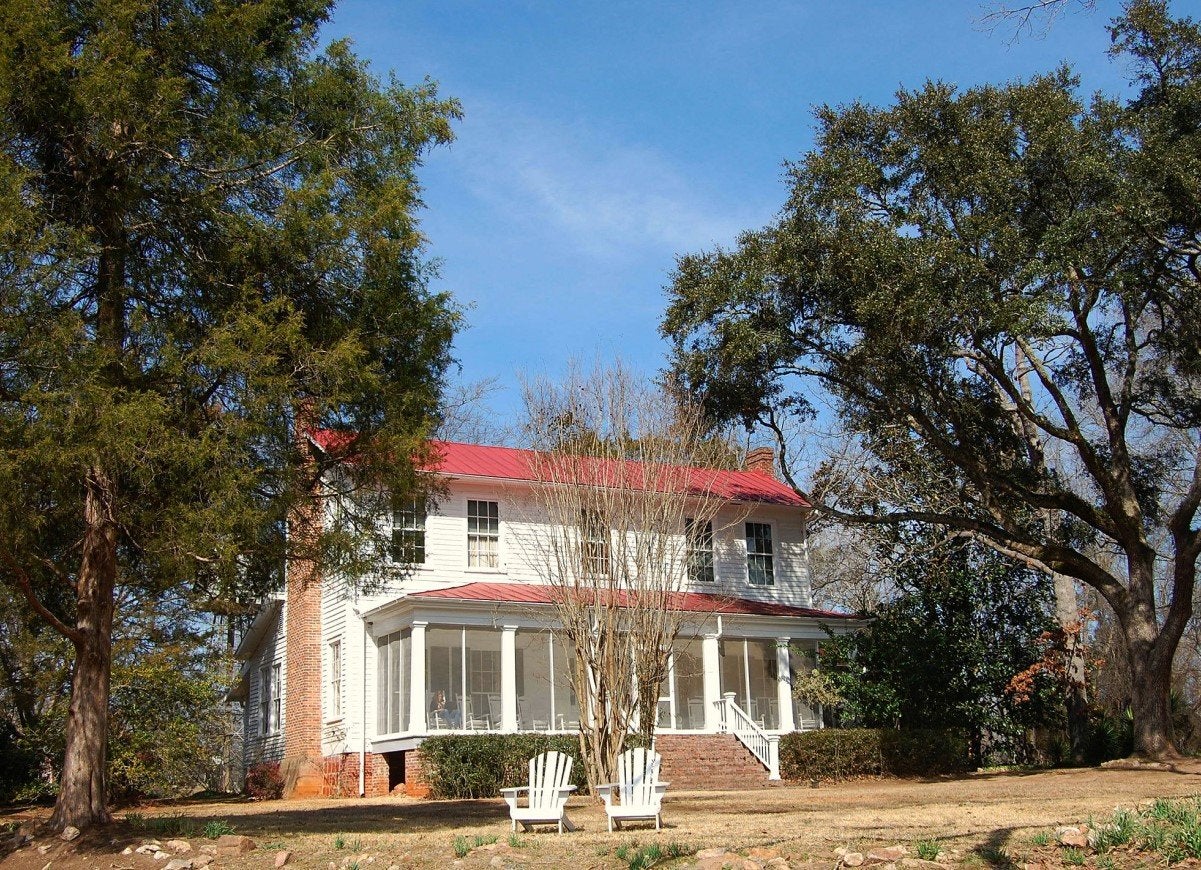
flickr.com via JR P
For fans of Southern Gothic fiction, the plantation-plain style home of Flannery O’Connor is a must-see. The Milledgeville, Georgia, house is where O’Connor penned most of her works, including the short story The Life You Save May Be Your Own—which was made for television with Gene Kelly in 1957. O’Connor used the $800 she earned from the television rights to buy her mother a refrigerator, still on display. Tour info is available at the website.
The Langston Hughes House
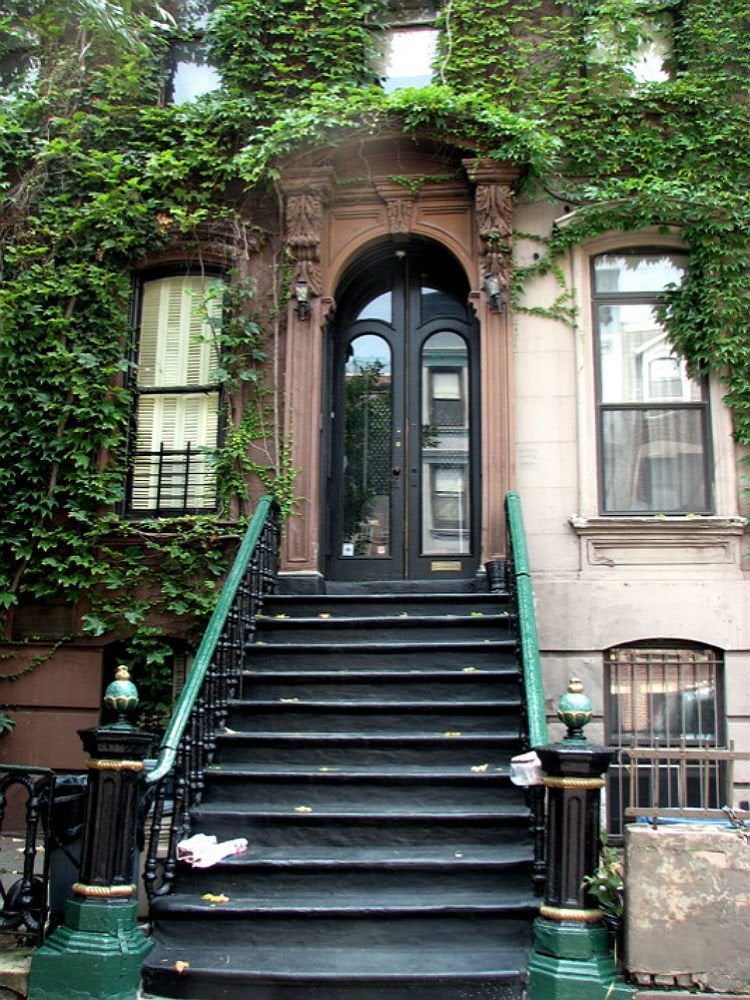
flickr.com via Georgia Popplewell
This Harlem Renaissance writer spent the last two decades of his life in a well-appointed New York City row house, where he penned the landmark poems “Montage of a Dream Deferred” and “I Wonder as I Wander.” Hughes’ home is located on the top story of the three-story, Italianate-style home, now open to the public. Built in 1869, the rowhouse captures the architecture and design of Harlem following the Civil War. Admission is donation only and hours are posted on the website.
RELATED: Here’s What Life is Like in Some of NYC’s Tiniest Apartments
The Edgar Allan Poe House & Museum
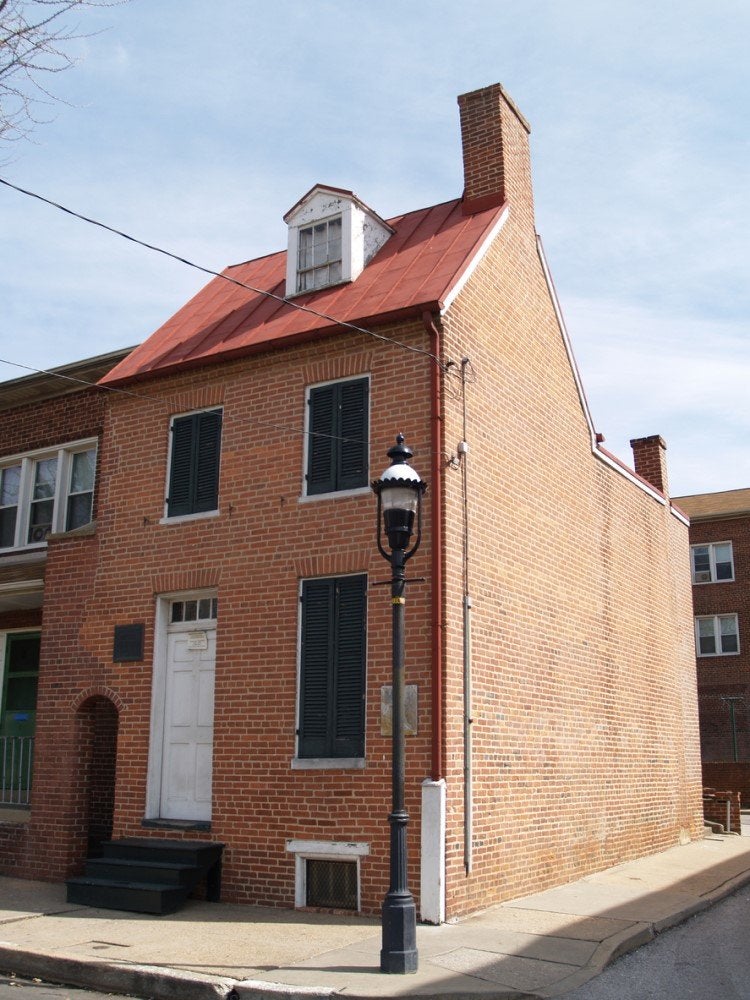
Edgar Allan Poe’s Baltimore, Maryland, residence is about as spooky as you’d expect. The wide-planked floors, plaster walls, and narrow stairwells are original—and just as Poe would have remembered them during the time he lived there with his family in the 1830s. Be sure to check out Poe’s portable writing desk and chair in the adjacent museum. Visit the website for directions and ticket prices.
RELATED: 15 Old Houses That Are Now Museums
